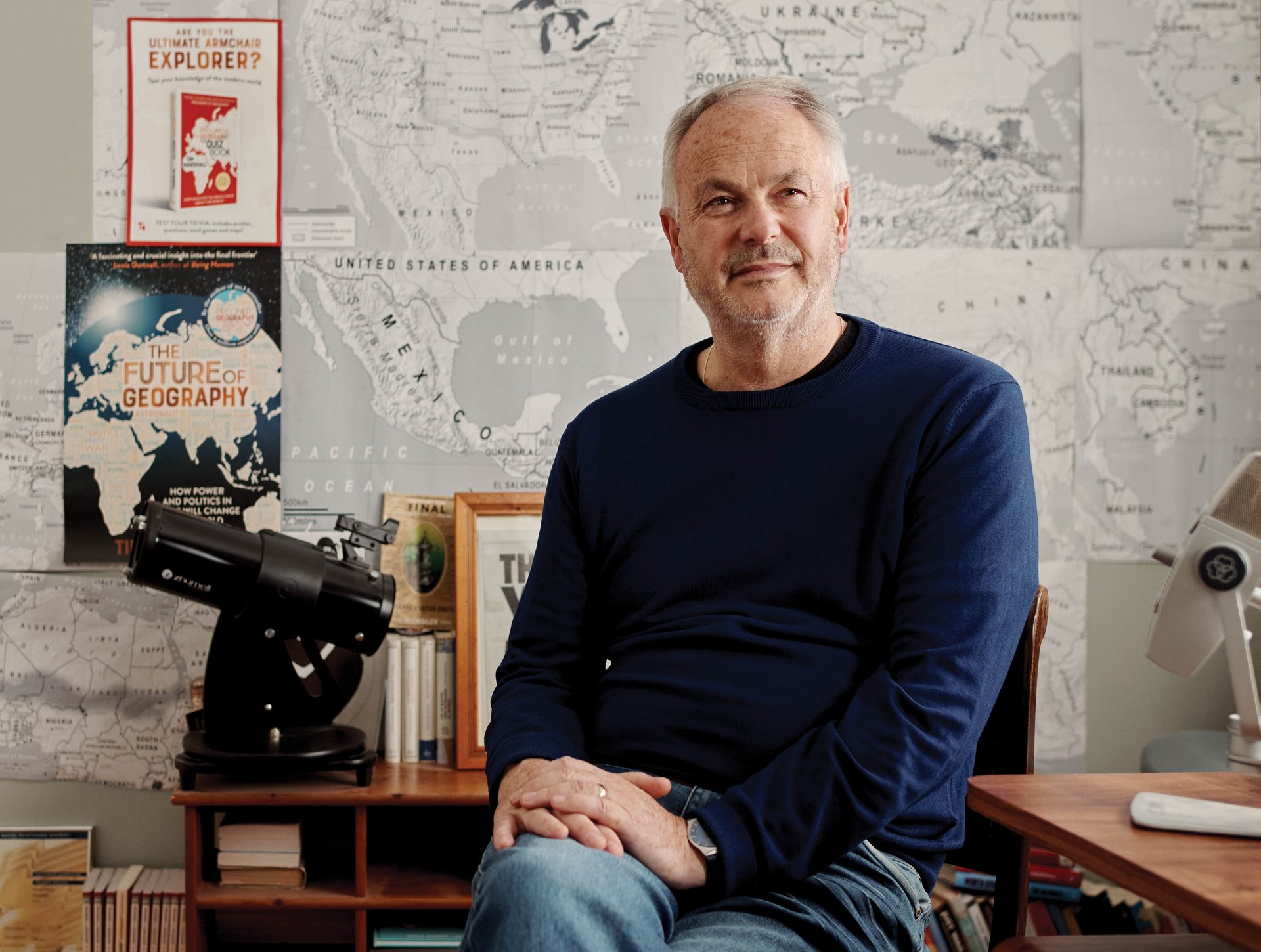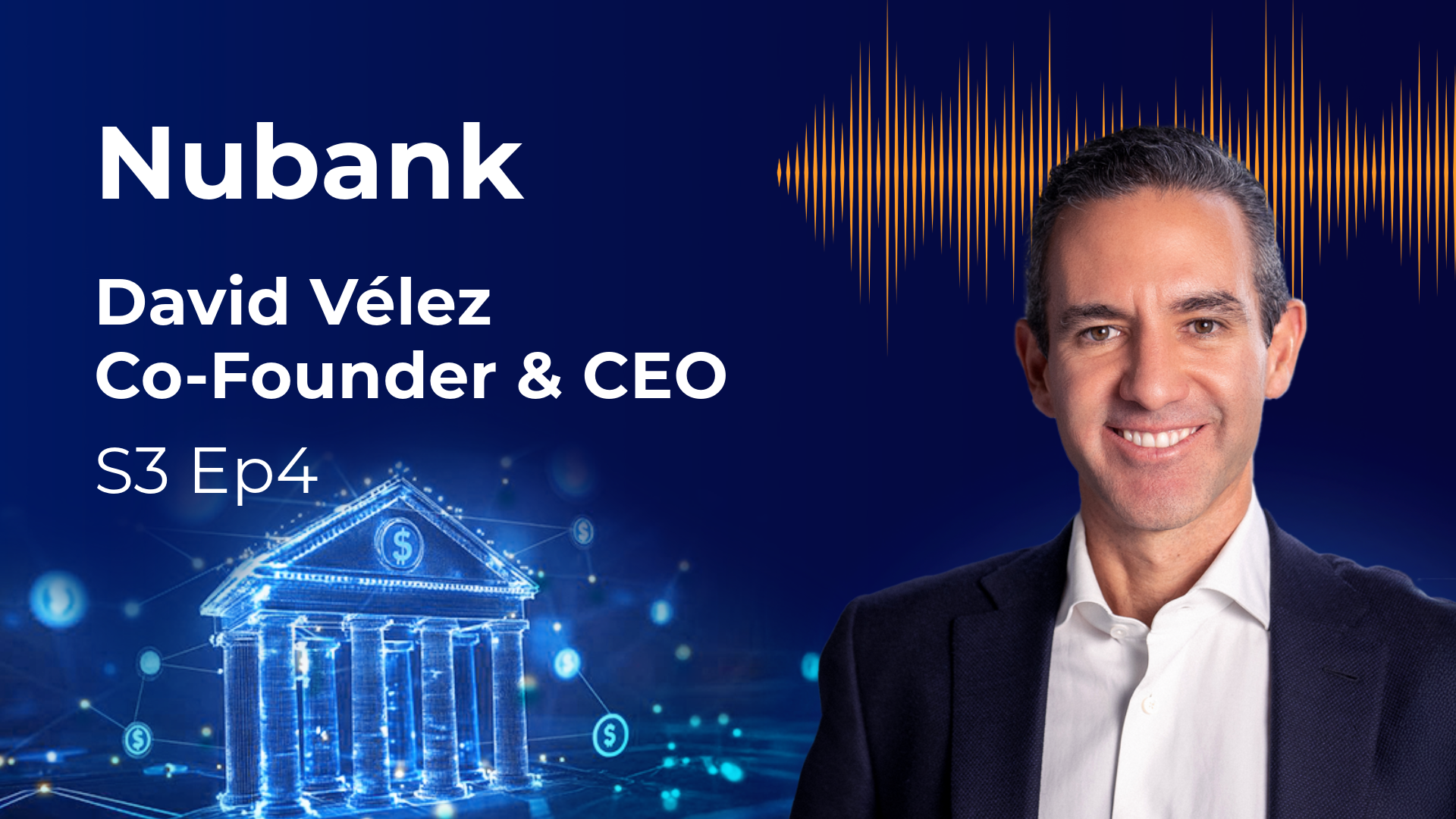March 2025
Article
7 minutes
Watch This Space: Tim Marshall on the Future of ‘Astropolitics’
Claire Shaw – Portfolio Director
- Author Tim Marshall says space is the new arena for rivalry over resources and military advantage
- He tells portfolio director Claire Shaw why we need new laws to head off future clashes over territorial and other claims
- But ‘Space race 2.0’ also promises many benefits to our existence back on earth

As with any investment, your capital is at risk.
Great power rivalries are no longer confined to Earth, according to the author Tim Marshall. Portfolio director Claire Shaw asks the author what’s at stake in the new age of ‘astropolitics’.
Claire Shaw: Your latest book, The Future of Geography, contends that the laws governing space are not fit for purpose. Why?
Tim Marshall: They were written in the 1960s and reflect that era. The drafters couldn’t foresee the technological leaps made since. The Outer Space Treaty [1967] needs drastic rewriting to reflect the realities of today and tomorrow. For example, it forbade weapons of mass destruction in space, meaning nuclear weapons, but said nothing about laser weaponry – it didn’t exist then.
The idea that no state or company can own any part of space is outdated. Given that we’re already going to space as nation-states and companies, we need legal language to reflect that.
CS: How has the balance between the big space powers shifted over the last 20 years?
TM: In the last century, there were only two: the US and the Soviet Union, later Russia. In this century, it’s those two plus China. Now, Russia is dropping below the others because its space budget is going more towards the Ukraine war.
What was once state-led in the US and China now involves private companies. SpaceX is the prime example. In China, although the state dominates, there are a lot of small commercial space companies. I suspect that China and the US will put more distance between themselves and Russia.
CS: Will the second Trump presidency change anything?
TM: It was Trump in 2019 who listened to advisers and founded the US Space Force. Its budget has increased year-on-year. There is no big expectation that he’ll cut the military budget. The nexus of state and private enterprise is strong in the US.
Commercial companies’ subsidies would be cut before Space Force. American politicians understand space and its place in critical national infrastructure, the economy and military in a way that Europeans don’t.
CS: How important is it to go to the moon?
TM: In many industries, there’s a debate about the advantages of being first: whether it’s better to let others make mistakes and then leapfrog them. Not when it comes to finding new resources on the moon, which is why there’s a race to get there.
Previously, there was no reason to go back: we’d been lots of times and collected lots of rocks.
Now, 50 years on, you’ve got the rationale of using the moon as a lily pad to hop to Mars. Then you’ve got the commercial aspect of finding and potentially extracting minerals. You can’t not be there because if it does then turn out to be a Klondike of valuable minerals, you’re stuffed.
The lunar south pole is where the action is. It’s a hard landscape with proper mountains, caves and craters. It has interesting geography, and there’s ice there in parts that don’t get any sunshine.
They’ve proven there are minerals there that are needed for the 21st century. They’re less sure about the amount, but with water and minerals, that’s the place to be, though it’s hard territory to land in and build a base on.
Then there’s the military aspect. If you’ve got a moon base and satellites around it that give you a full spectrum view of what’s going on there, as well as on Earth, you’re in a better position to protect your assets.
CS: What minerals would you highlight?
TM: The one that they’d like to find a massive seam of is lithium, which has multiple uses in energy storage and materials science. Also, there are large quantities of helium-3 in the soil, though how useful that is, we still don’t know.
Chinese scientists believe there is enough of it to fuel all of Earth’s power needs for 10,000 years. That’s the theory, but it depends on finding it, getting it, processing it, bringing it back – and cracking nuclear fusion.

CS: How have SpaceX’s reusable rockets and Starlink’s satellite constellations affected the balance of power?
TM: Elon Musk divides opinion. But whatever you think of the founder of those companies, he’s a revolutionary innovator in this industry.
Reusable rockets mean instead of chucking away tens of millions of dollars every time, you bring the rocket back. The knock-on effect is that not only is it cheaper to launch, it’s also cheaper to carry something on the payload.
That has democratised access to space. Before, many lesser powers – Nigeria, say – would find it hard to cover the costs of launching a major satellite constellation. Now, they make CubeSats, satellites the size of a Rubik’s cube.
You can build 20 of them and stick them in the nose cone of a SpaceX rocket, along with those of several other companies or countries.
The cost of the satellites has come down because they can make them so small now, and then the cost of getting them up there and launching them has come down because of reusable rockets. That’s revolutionary. Having said that, there is also a first-come-first-served aspect to space. There are parts where, if you don’t get there in the initial wave, you may never get there.
In the 1960s, there were a handful of countries in space. There are now more than 80. Part of that is down to Musk. He’s been at the forefront of delivering the internet via satellite. Because of that, the Russia-Ukraine war is the first real space war in which both sides have used space assets.
SpaceX is a massive part of why space is becoming interesting again. Musk has gripped people’s imaginations. Anyone who’s seen two of its rockets landing at the same time… it looks like sci-fi. Catching a rocket with those ‘chopstick’ arms is sensational.
CS: We like companies with technologically minded leaders like Musk, Meta’s Mark Zuckerberg or Shopify’s Tobi Lütke. They’re not interested in winning last decade’s technology…
TM: Yes, because you mustn’t make the old military mistake of fighting the last war. Otherwise, it will be like the Azerbaijan-Armenia War of 2020 when Armenia, which hadn’t been keeping up, had its tanks and armoured personnel carriers at the front line. The Azerbaijanis, using Turkish-made drones, also AI, virtually wiped them out in two days.
CS: What role could space play in monitoring climate change?
TM: That’s one of the many positive aspects of Space Race 2.0. We’ve already deflected a small asteroid off its course two million miles away. That was good forward planning in case a much bigger one comes our way.
We use satellites to measure the temperature of the oceans to better understand climate change. We’re working on how to get solar power from space, where there’s very powerful 24/7 sunlight, and it can be directed wherever you want to.
We are doing amazing medical experiments in space. We use satellites to tell farmers where to plant crops, where’s best to build transport infrastructure at the lowest cost.
Rockets do use huge amounts of fuel, but it’s minuscule relative to what comes out of cars every day.
And we have the prospect of cheap, clean solar energy, the metals that we need to build our renewable technology down here: we’re not going to find those solutions if we don’t go into space. So, on balance, we have to go.
And we will. Because humankind has never seen a mountain it didn’t want to conquer.
CS: What will be the big space development in the next 30 to 40 years?
TM: Answering that means imagining the unimaginable. If 200 years ago you’d told people there were things in the air called radio waves, and if you shouted into one, someone could hear you 10,000 miles away, they’d say you were mad. So it will be something similar we haven’t thought of yet.
Things that are completely sci-fi now will be completely part of our everyday lives. Remember Captain Kirk’s flip-phone communicator in Star Trek? That one went from fantasy to reality quite quickly.
About the author - Claire Shaw
Portfolio Director
Claire Shaw is a portfolio director and plays a prominent role in servicing Scottish Mortgage’s UK shareholder base. Before joining in 2019, she spent over a decade as a fund manager with a focus on managing European equity portfolios for a global client base. With a background in analysing companies and communicating investment ideas, Claire is also responsible for creating engaging content that makes the Scottish Mortgage portfolio accessible to all its shareholders. Beyond that, she works closely with the managers, meeting with portfolio companies and conducting in-depth portfolio discussions with shareholders.
Important information
This communication was produced and approved at the time stated and may not have been updated subsequently. It represents views held at the time of production and may not reflect current thinking.
This content does not constitute, and is not subject to the protections afforded to, independent research. Baillie Gifford and its staff may have dealt in the investments concerned. The views expressed are not statements of fact and should not be considered as advice or a recommendation to buy, sell or hold a particular investment.
Baillie Gifford & Co and Baillie Gifford & Co Limited are authorised and regulated by the Financial Conduct Authority (FCA). The investment trusts managed by Baillie Gifford & Co Limited are listed on the London Stock Exchange and are not authorised or regulated by the FCA.
A Key Information Document is available by visiting our Documents page.
Any images used in this content are for illustrative purposes only.









